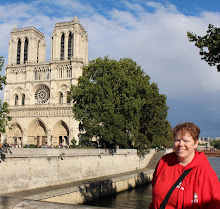
I went to a great session at MIT on Scratch this morning, Monday, July 27th. It was run by several of the program developers, a graduate student, several programmers, a teacher who is currently using Scratch, and a professor Mitchel Resnick. The lab at MIT is really interesting with a large elephant balloon in one corner, a replica of the Millennium Falcon made out of gold Lego hanging from the ceiling, a massive mural, and stations with a variety of toys. The idea is that this lab is a Lifelong Kindergarten where the Kindergarten spirit to build, design, and create is kept alive. Scratch was developed with this principal in mind as it allows creation and sharing of interactive games, stories, and animations made by students.
Students need to think creatively, reason symmetrically, and work collaboratively. The students use a creative learning spiral which goes imagine, create, play (experiment), share (receive suggestions and critiques from other users), reflect (how could they change/improve their project), re-imagine, recreate, and so on. Students can download other student’s projects and remix and repost them or borrow parts for their own projects. We were shown some of one 13 year old girl’s (My Red Neptune) projects and she is very good at drawing and creating animations and other students have even requested that she create specific animations for their projects.
To create in Scratch is easy and difficult. They described it as like snapping Lego blocks together. There are different components like Moves, Sounds, and Controls. For example you pick a Sprite (character) from a gallery of pre-made ones, by drawing your own, or taking a picture from a camera or the Internet. Then you create a script for that Sprite. This can be simply asking it to move to music when clicked on or you can have the Sprite ask a question and then set up an IF – THEN - ELSE loop to tell if the correct answer was inputted. It is a good way to reinforce logical thinking as the Sprites do exactly what you tell them.
The Scratch website is 2 years old and nearly ½ million projects have been shared. One of the current focuses of the Scratch team is to help teachers use Scratch in classroom settings. As part of this project we were asked to develop a project to do with mapping. A book was shared to show that maps could be done in a variety of forms and ways such as mapping your heart, your family, your day, your vacation, and so on. I chose to do a map for Ma Famille, something I could have students do in grade three.
To begin I stole pictures off of Google, sorry Donna, and put them in a house. I’d have students scan pictures of their own family members or draw people, probably draw as it would be safer re-identity but more labor intensive. When you clicked on each picture a speech bubble appeared telling who they were in French, I think I would have the students record who each person was but I didn’t have a microphone. When I was done then I experimented by changing it into a game, Smart Board applications. I set it up so that when you clicked on a picture it asked who it was and the student would type in the name in French and the program would either say they got it correct and respond in a sentence or tell them to try again. You can see my efforts by clicking here.
If you are interested further you can check out more example created by grade five and six students at the Tech Examples Wiki. Their teacher said one neat tie in to Internet Safety occurred when the students took digital pictures and made a presentation on themselves and their likes and dislikes. She said it led to valuable discussions about what permissions you needed when putting up pictures of your friends, when you were giving out too much personal information, and so on. The presentation was awesome and I think I’ll have to get our techs busy downloading Scratch onto the machines at school.


